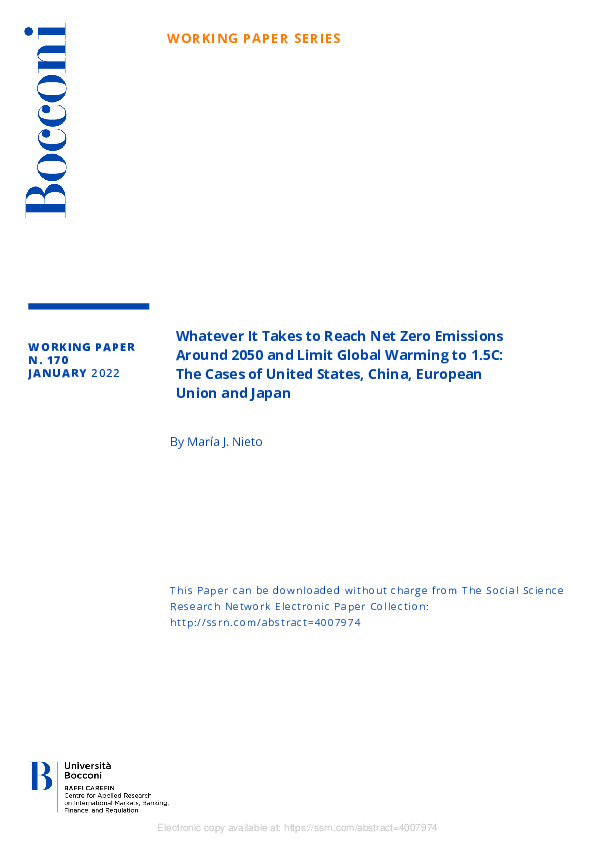Whatever it takes to reach net zero emissions around 2050 and limit global warming to 1.5c: the cases of United States, China, European Union and Japan

Università Bocconi - Milan
2022
24 p.
climate change ; decarbonization ; government policy ; environmental policy ; renewable resources ; public investment
China ; EU countries ; Japan ; USA
BAFFI CAREFIN Centre Research Paper
170
Government and public administration
http://dx.doi.org/10.2139/ssrn.4007974
English
Bibliogr.
"This paper analyzes the most recent NDCs as well as public political commitments of the US, China, the EU and Japan (56% of the world GHG emissions) to meet the goal of reaching the 2050 net zero emissions target necessary to limit global warming to the 1.5C. This analysis is made against the background of the transition pathways defined by the REMIND-MAgPIE 2.1-4.2 integrated assessment model for an orderly transition to reach that target. The commitments of US, China, the EU and Japan are not in line with the requirements to limit global warming. Only the EU seems to have an adequate, sufficiently detailed and legally binding strategy to fulfill that pledge. This finding is in line with the recent United Nations Report concluding that even with enhanced 2030 targets and the additional public statements, the world is on track for a temperature increase between 1.8-2.4C this century even assuming that every country puts in place effective policies that will fully achieve its set targets. In all four regions of the world and particularly in 2025-2030, the orderly transition to net zero around 2050 demands the highest investments in renewable energies for electricity, CCUS and energy efficiency. China, the most critical to reach global carbon neutrality, is by far the most highly dependent on CCUS and, more generally, on CDR technologies to reach the 2050 net zero target due to an energy mix dominated by fossil fuels."
Digital
The ETUI is co-funded by the European Union. Views and opinions expressed are however those of the author(s) only and do not necessarily reflect those of the European Union or the ETUI.